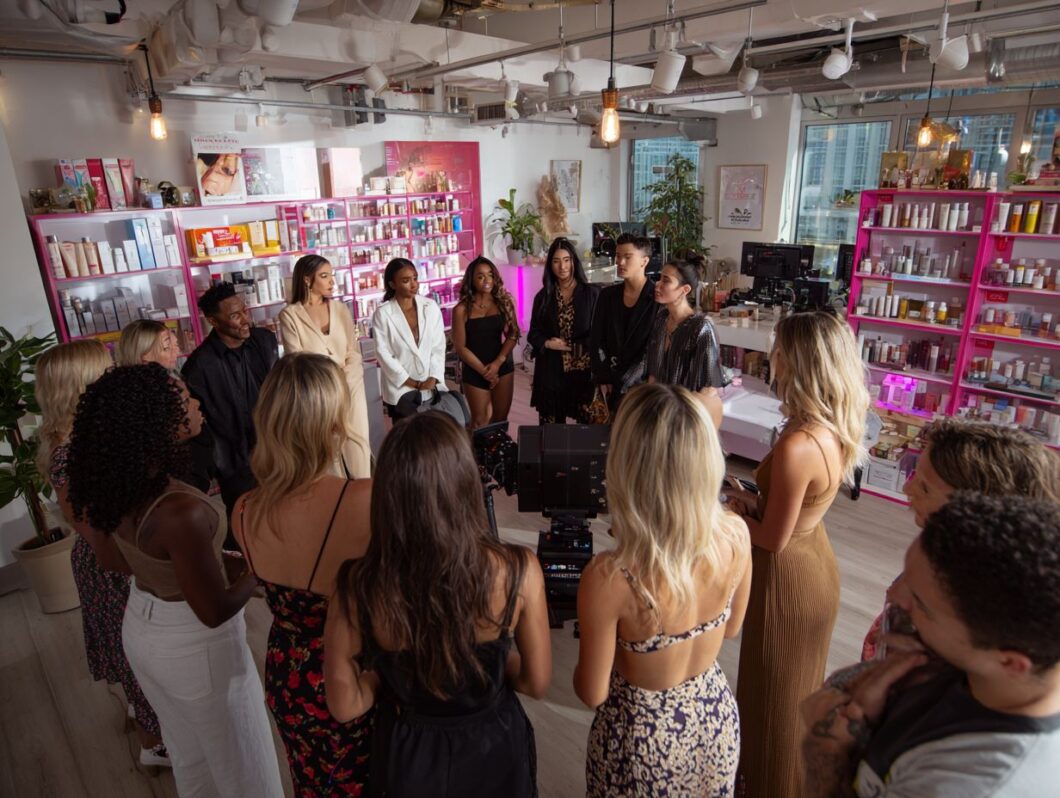In recent years, I have observed that beauty brands such as Sol de Janeiro and Juliette Has a Gun have noted that influencer marketing has emerged as a transformative force in the beauty industry, fundamentally changing the way brands connect with consumers. As social media continues to play a pivotal role in our daily lives, I see that beauty brands are increasingly partnering with influencers to harness their extensive audiences and authentic engagement. This article aims to explore the impact of influencers on consumer behavior, highlight successful brand partnerships, and examine the benefits of these collaborations. Additionally, I will address future trends in this space and provide insights on selecting the right influencers to enhance your brand’s presence. Join me as we navigate this dynamic landscape and explore strategies to maximize your brand’s potential.
Key Takeaways:
- The beauty industry has seen a significant rise in the use of influencer marketing, with brands leveraging the impact of influencers on consumer behavior to reach new audiences.
- In 2025, top beauty brands will continue to collaborate with influencers to create authentic and engaging content that resonates with their target audience, resulting in increased brand awareness and sales.
- Partnering with influencers allows beauty brands to tap into the power of social media, utilizing various platforms and strategic approaches to connect with their audience and build long-term relationships with their influencers.
The Rise of Influencer Marketing in the Beauty Industry
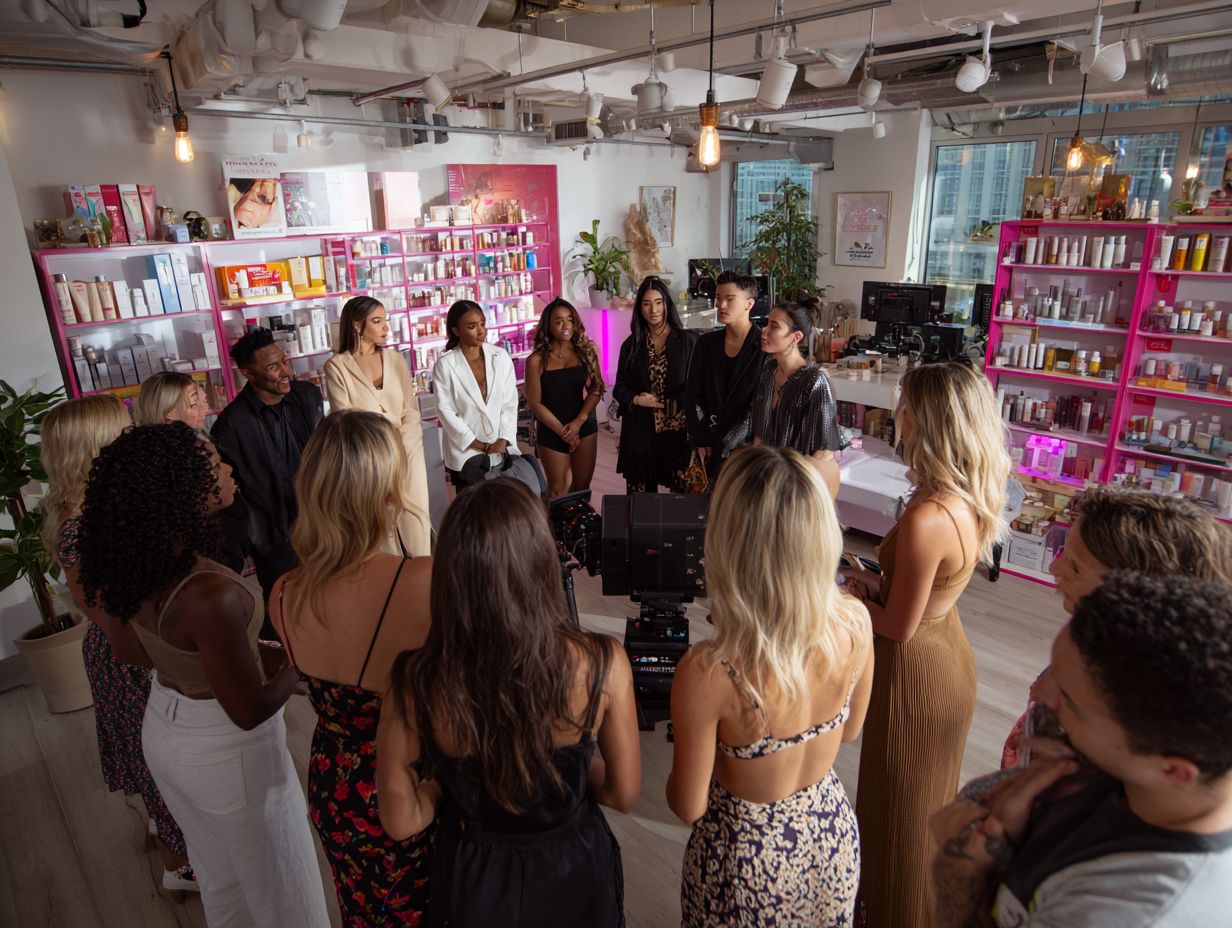
The rise of influencer marketing in the beauty industry has significantly transformed my approach to engaging consumers, particularly among younger generations like Gen Z and Gen A, as demonstrated by brands like Drunk Elephant and Phlur.
According to Cosmetify, I find that brands are utilizing influencer partnerships to bolster their brand identity and improve engagement rates, leading to higher Brand Vitality Scores and notable estimated earnings.
Influencers are instrumental in shaping consumer behavior and preferences.
This shift is largely driven by the integration of social media platforms such as Instagram and TikTok, where influencers frequently showcase their content and establish connections with their audience. Industry experts -including the team at Statista-have been tracking the growth of influencer marketing worldwide, providing valuable insights into its impacts.
Consequently, I am continuously evaluating new strategies to capitalize on this trend and enhance brand visibility.
Understanding the Impact of Influencers on Consumer Behavior
I recognize that influencers significantly impact consumer behavior, particularly in the beauty industry, where their recommendations can greatly influence purchasing decisions. This influence arises from the trust these individuals build with their followers, enabling them to sway opinions in favor of specific products.
For example, when a well-known beauty influencer shares their experience with a new skincare line, the engagement metrics-such as likes and comments-can dramatically increase, highlighting the strong connection they maintain with their audience.
Brands like Glossier and Fenty Beauty have successfully leveraged this power by collaborating with influencers such as James Charles and Ariana Grande for product launches, resulting in notable increases in brand loyalty and sales.
Additionally, engaging content often leads to higher engagement rates, sometimes reaching as high as 10-20%. This clearly demonstrates the effectiveness of influencer partnerships in fostering consumer trust and encouraging the trial of new products.
Top Beauty Brands Partnering with Influencers
In recent years, I have observed that numerous beauty brands have acknowledged the importance of influencer partnerships, strategically leveraging these collaborations to strengthen their market presence and drive retail expansion.
Brands such as Fenty Beauty, Huda Beauty, and Charlotte Tilbury have made significant investments in influencer marketing strategies, which have shown year-over-year (YoY) growth in both engagement and annual searches. As highlighted by Sprout Social, these strategies are often exemplified by successful campaigns that set industry standards.
These partnerships not only enhance brand visibility but also play a critical role in boosting estimated earnings through increased sales of skincare and beauty products.
As influencers continue to shape trends, I recognize that brands must adapt their strategies to remain relevant and effectively connect with their audiences.
Brand and Influencer Collaborations in 2025
I observe that brand and influencer collaborations in 2025 are set to significantly impact the beauty industry, as brands increasingly seek to partner with rising influencers to enhance their reach and authenticity.
This trend reflects the growing consumer preference for genuine experiences and relatable voices, particularly among younger demographics who appreciate the sincerity and passion that emerging influencers offer.
For example, new beauty brands gaining traction on social media can effectively engage with micro-influencers who have niche followings, resulting in highly engaged audiences. Such collaborations not only improve brand visibility but also build consumer trust, as these influencers often develop strong, personal connections with their followers.
By harnessing the dedicated fan bases of these fresh voices, brands can craft more compelling narratives that resonate profoundly with potential customers.
Benefits of Influencer Partnerships for Beauty Brands
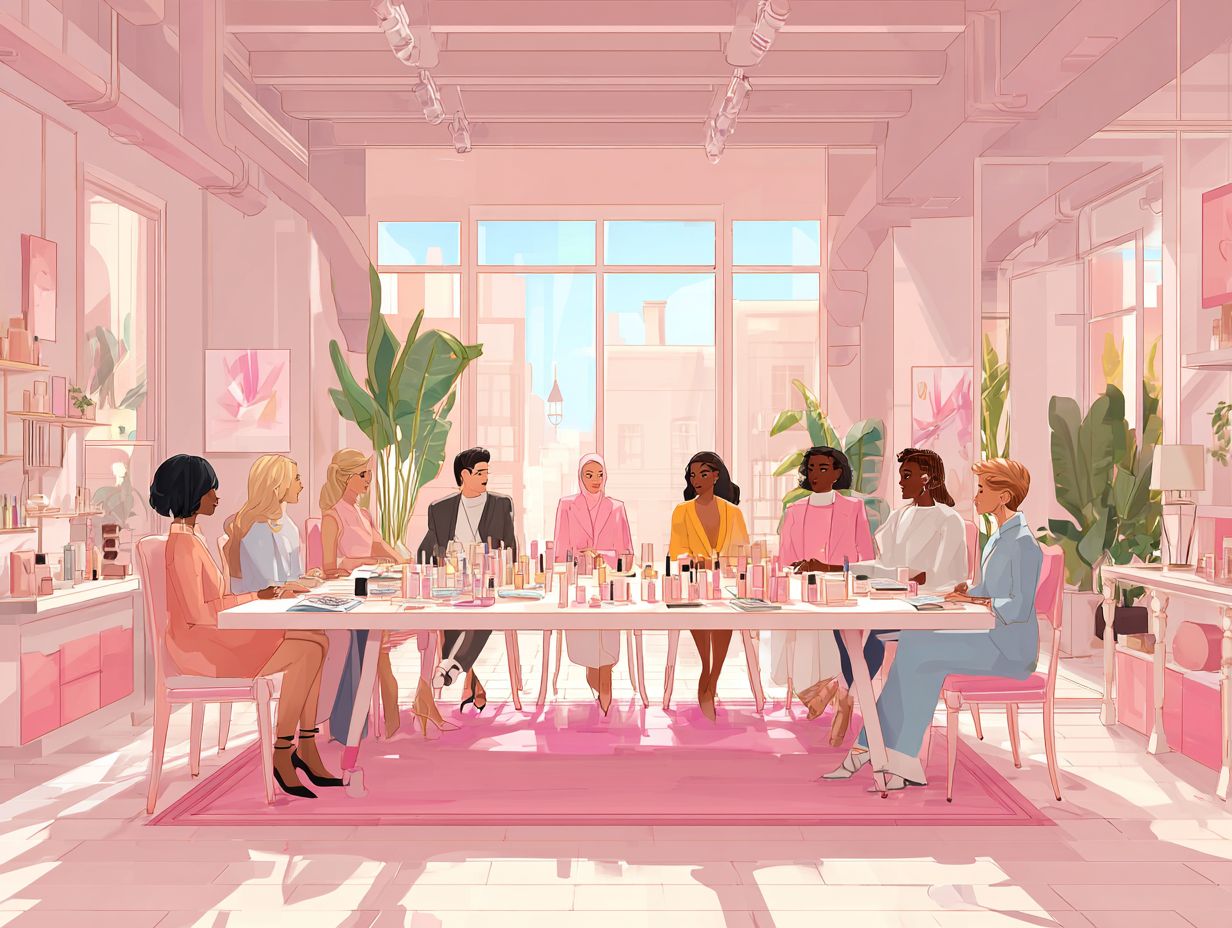
I recognize that influencer partnerships provide numerous benefits for beauty brands, significantly enhancing brand awareness and sales while improving engagement rates with target audiences.
By aligning my brand’s unique selling propositions with the authentic voices of influencers, including those with significant Instagram and TikTok followers, I can effectively connect with consumers who appreciate genuine recommendations.
As I navigate the competitive beauty landscape, these partnerships enable me to leverage influencers’ reach and credibility to attract and retain customers.
Furthermore, with Gen Z and Gen A consumers increasingly prioritizing authenticity, I understand that implementing effective influencer marketing strategies can lead to substantial returns on investment.
Boosting Brand Awareness and Sales
Boosting brand awareness and sales through influencer marketing has become essential for me as I work with beauty brands striving to capture the attention of today’s consumers.
With the rise of social media platforms, I recognize that influencers play a pivotal role in shaping consumer preferences, often serving as trusted sources for product recommendations. By collaborating with influencers whose audiences align with my target demographic, I can create authentic narratives that resonate with potential buyers.
For example, a well-coordinated campaign featuring a popular beauty influencer showcasing a new skincare line can significantly enhance visibility and yield tangible results, such as notable increases in website traffic and sales.
Campaigns like Fenty Beauty’s partnership with diverse influencers have demonstrated that leveraging authentic voices can drive impressive engagement rates and substantially boost revenue figures.
The Role of Social Media in Influencer Marketing
Social media platforms such as Instagram and TikTok are critical to the landscape of influencer marketing, providing essential channels for beauty brands like e.l.f. Cosmetics and Rhode to connect with consumers and highlight their products.
The visual appeal of these platforms enables influencers to produce engaging content that resonates well with their followers, making them valuable partners in promoting beauty brands.
By establishing strategic partnerships, brands can leverage the existing follower base of influencers, utilizing their credibility and influence to enhance marketing campaigns. According to Forbes, staying informed about the biggest social media trends is crucial for brands looking to adapt their strategies effectively.
As consumer preferences continue to evolve, it is imperative for brands to adjust their strategies to effectively harness these platforms for improved user engagement and brand loyalty.
Platforms and Strategies for Successful Partnerships
Identifying the right platforms and strategies is essential for beauty brands like mine that aim to build successful partnerships with influencers in the competitive social media landscape.
With numerous options available, including Instagram, TikTok, YouTube, and Pinterest, it is vital to carefully assess which platforms align best with our brand identity and audience engagement.
For example, Instagram excels in visual storytelling, making it an ideal choice for showcasing product aesthetics, while TikTok provides a dynamic environment for short, engaging videos that appeal to younger consumers.
I recognize the importance of understanding the unique attributes of potential influencers, including their reach, audience demographics, and content style.
By selecting influencers whose values and niches align seamlessly with my brand’s unique selling propositions, I can maximize my investment and ensure authentic connections that truly resonate with the target consumer base.
Future Trends in Influencer Marketing for Beauty Brands
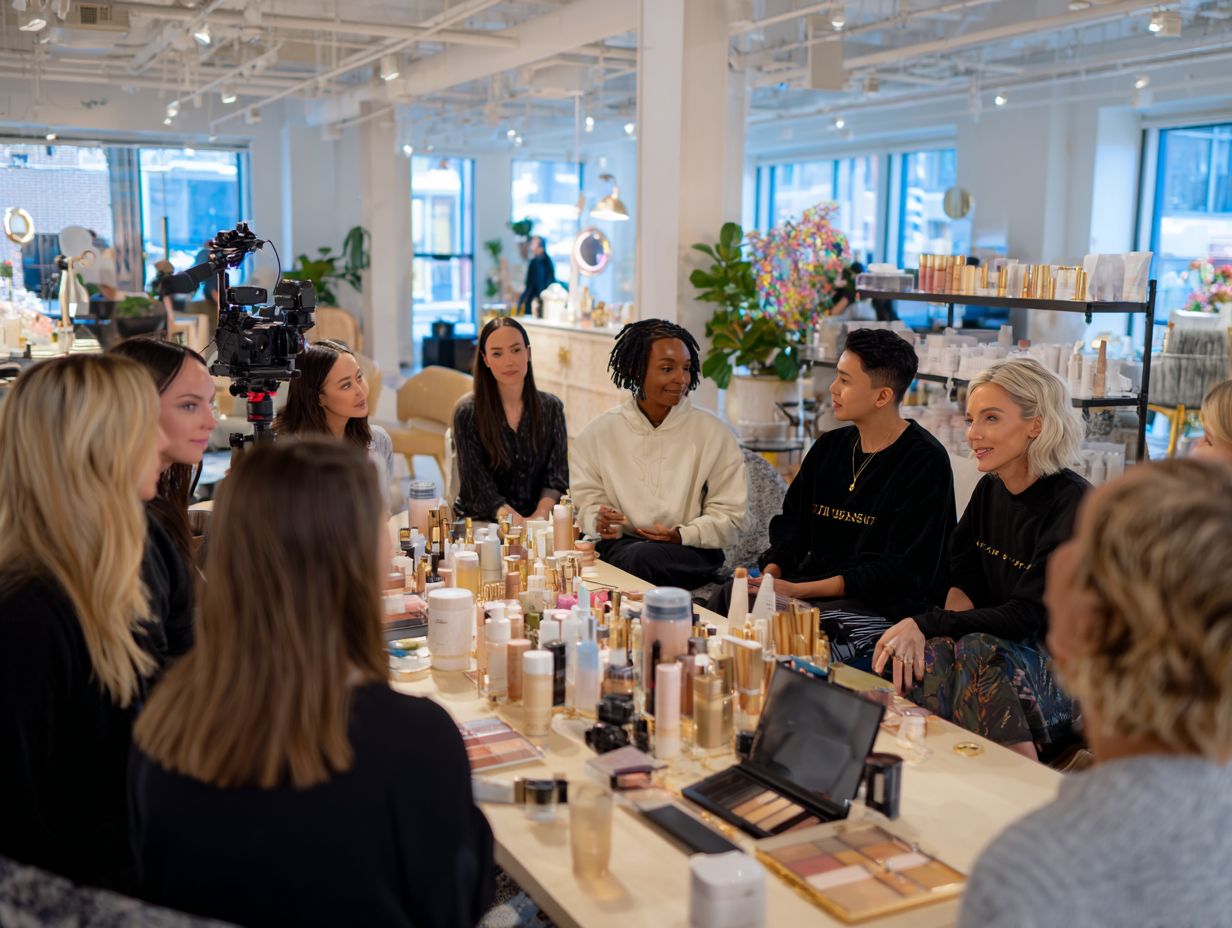
I observe that future trends in influencer marketing for beauty brands are leaning toward a more personalized and authentic approach, especially as Gen Z and Gen A consumers continue to influence the market with their distinct preferences and values.
In the years ahead, I anticipate that brands will increasingly prioritize building long-term relationships with influencers over one-off collaborations, placing a strong emphasis on sustainability and transparency in their partnerships.
As consumer behavior evolves, I see the integration of technology, such as augmented reality and personalized content experiences, enhancing the connection between brands like Este Lauder and their audiences, influencing product type preferences.
This shift will ensure a dynamic and responsive marketing landscape.
Predictions for the Next Five Years
Predictions for the next five years indicate that influencer marketing will continue to evolve, with beauty brands like e.l.f. Cosmetics increasingly focused on establishing authentic and meaningful connections with consumers.
This shift is likely to lead to a greater emphasis on micro-influencers, whose smaller yet highly engaged followings can facilitate genuine interactions. As user-generated content gains traction, I anticipate that brands like Glossier and Rhode will prioritize collaborations with everyday individuals rather than solely relying on traditional influencers, resulting in a diversification of marketing strategies.
Platforms like TikTok and Instagram, with rising brand vitality scores, are expected to see further innovations as consumers, particularly Gen Z and Gen A, show a preference for video content over static posts. Consequently, beauty brands will need to adapt their campaigns to align with this trend. Engagement techniques such as live shopping events and interactive polls will become essential tools for brands, enabling them to gather real-time feedback and create a more inclusive experience for their audience.
How to Choose the Right Influencers for Your Brand, Like Sol de Janeiro and Charlotte Tilbury
Choosing the right influencers for my beauty brand, such as Fenty Beauty and Drunk Elephant, is a crucial process that requires a deep understanding of my target audience and careful alignment with influencers who reflect my brand identity.
To maximize the effectiveness of influencer marketing, I take into account factors such as the influencer’s engagement rate, audience demographics, and unique selling propositions.
By selecting influencers whose values are in harmony with my brand, I can forge authentic partnerships that foster consumer trust and loyalty. Additionally, utilizing data analytics enhances my decision-making during this selection process, ensuring that my collaborations are successful.
Factors to Consider and Best Practices for Brands Like MAC Cosmetics and Este Lauder
When selecting influencers for my beauty brand, like Juliette Has a Gun and Phlur, I consider several key factors to ensure a successful partnership, including audience alignment and authenticity.
Understanding the demographics of an influencer’s audience, including TikTok and Instagram followers, is crucial; I need to ensure that their followers align with the target market for my beauty products. Analyzing engagement rates and overall scores is also essential, as it reveals how actively the audience interacts with the influencer’s content-high engagement typically indicates a loyal following.
Authenticity plays a significant role as well; influencers who are genuinely passionate about the products they promote, like those from The Ordinary and CeraVe, are more likely to resonate with their audience and foster meaningful conversations. Reviewing the successes of previous collaborations can provide valuable insights into partnerships that have yielded positive outcomes, especially in terms of YoY growth and retail expansions.
I also adhere to best practices by clearly communicating my expectations, allowing influencers the creative freedom to express themselves, and cultivating long-term relationships. This approach creates an environment where both parties can thrive.
Frequently Asked Questions About Beauty Brands in 2025, Including Dior Beauty and Ariana Grande
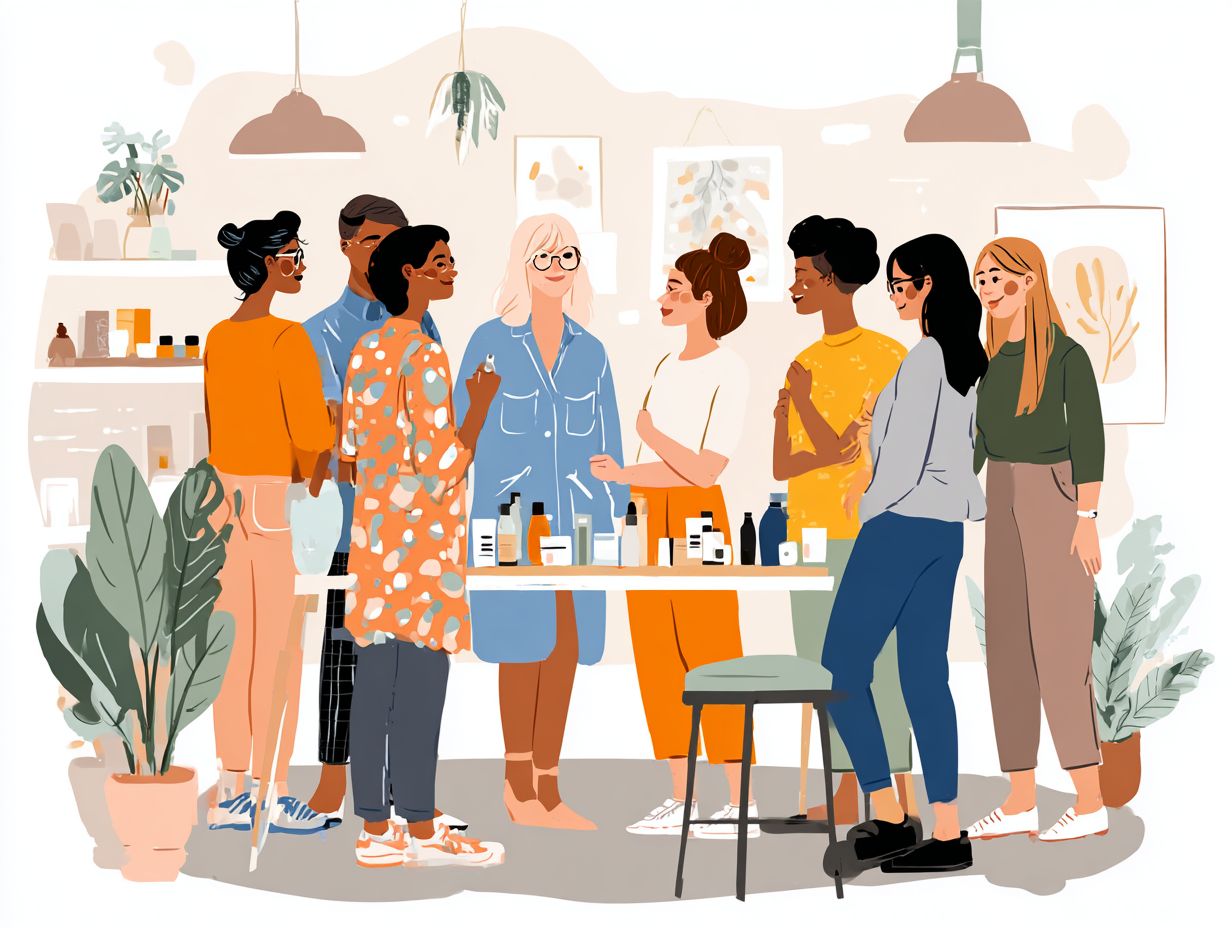
What are the benefits of top beauty brands partnering with influencers in 2024?
There are several benefits for top beauty brands like James Charles and Huda Beauty to partner with influencers in 2025. These include increased brand awareness, reaching a larger audience, and building credibility through social proof.
Which beauty brands are expected to increase their influencer partnerships in 2025?
While it is difficult to predict with certainty, some top beauty brands that are likely to increase their influencer partnerships in 2024 include L’Oreal, Estee Lauder, and Sephora.
How do influencers help to promote beauty brands in 2025?
Influencers can help promote beauty brands in 2024 through various methods such as sponsored posts, product reviews, and hosting giveaways. They can also create buzz and generate excitement around new product launches.
What makes influencer partnerships a more effective marketing strategy for beauty brands in 2025?
Influencer partnerships are considered a more effective marketing strategy for beauty brands in 2024 because they provide a more authentic and personal touch, and allow for a more direct connection with the target audience compared to traditional advertising methods.
Are there any potential drawbacks to beauty brands partnering with influencers in 2025?
While influencer partnerships can be highly beneficial, there are also potential drawbacks to consider. These include ensuring the influencer aligns with the brand’s values and maintaining control over the messaging and content being shared.
How can beauty brands in 2025 measure the success of their influencer partnerships?
Beauty brands can measure the success of their influencer partnerships in 2024 through various methods such as analyzing engagement rates, tracking sales through unique discount codes, and monitoring brand sentiment online. This data can help determine the effectiveness of the partnership and inform future decisions.


